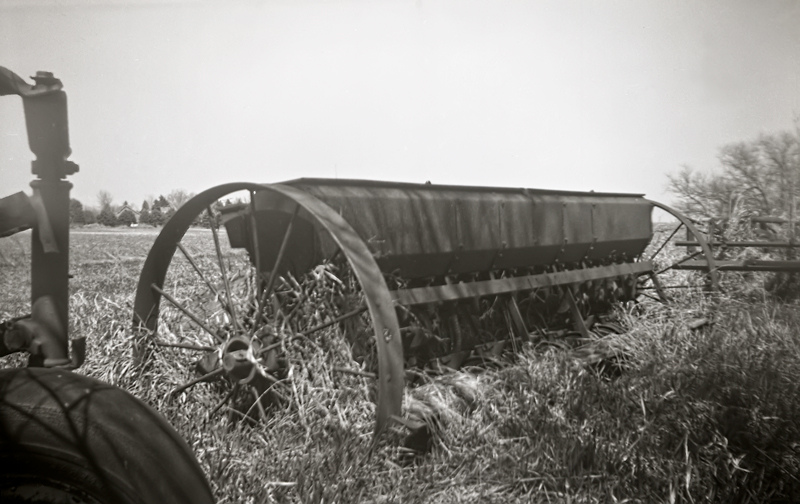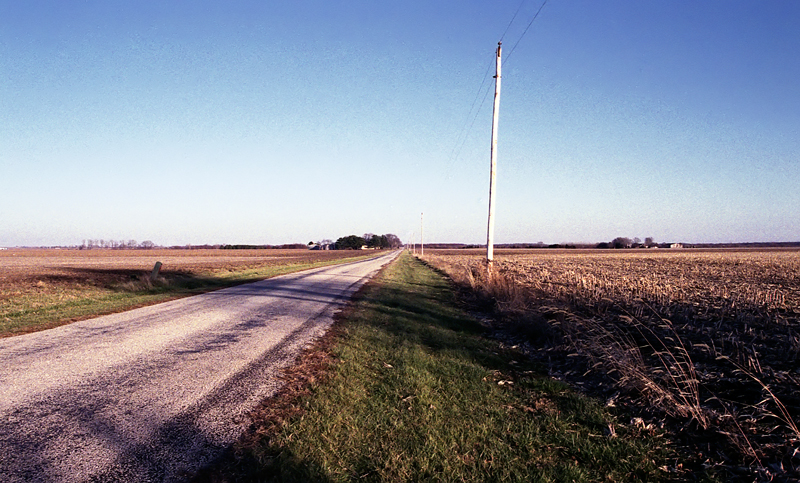Tuesday, March 26, 2013
Meyer-Optik Görlitz Primoplan 58mm f/1.9
I was fortunate enough recently to have been given the cameras that were once used by my old high schools photo club. Looks like there will be a lot of fun stuff to play with. One of the first things that came to mind was to test out this Primoplan lens on my digital adapter. The Primoplan was on a Praktica SLR that was first made in 1949. Since the Primoplan was one of the standard lenses for this camera it probably is of similar vintage.
The Primoplan is known for its swirly bokeh. It has an amazing 14 aperture blades. Wide-open it also seems pretty sharp to me. My experience with the Primoplan plan does make me curious about what kind of results I will get from it on the Praktica. Hopefully the weather will get warm enough here soon that I will test it out. The following images were all taken at f/1.9.
Thursday, March 21, 2013
Agfa Silette
When I was going through film images from the past year I noticed that I hadn't made a post for the Agfa Silette. I must have been planning to do so since I made a Silette gallery a while ago. First made in 1953, the Agfa Silette is a fairly simple scale focusing camera using 35mm film. The one I have seems to be the most common of the first version of the Silette. It has a 1/25 - 1/200 plus B Pronto shutter and a 45mm f/3.5 3 element Agfa Apotar lens. One notable feature of the Silette is that it has a film advance lever. That actually was a fairly advanced feature for a camera for this era. And to add to that the film advance also cocked the shutter! The Silette is a scale focusing camera. Which means you have to guess the distance and then select it with the scale focusing ring. The lens focuses to three feet. Scale focusing may be a little intimidating if you haven't used it before, however with some practice and a study of the depth of field charts for the camera, it is easy to get good results.
The Agfa Silette appears to have originally sold for around $40 which would be a little over $300 today. Just judging by the numbers of this camera that are still around Agfa must have sold a lot of them. Ansco also sold the same camera in the US as the Ansco Memar. It is not hard to see why the Silette was so popular. It is a well-designed easy to use camera capable of giving very good results. For the money I think it could be argued that it was one of the best cameras around during its time.
Agfa Silette Gallery
Tuesday, March 19, 2013
Going through this years photos.
I decided that I am going to go through the film images I have taken in the last year or so and pick one from each camera that I hadn't posted before. With most of these cameras I have already been through the pictures and picked out ones I liked to make a gallery or to post here. So I am working mostly with left-overs. Hopefully I will find some images that I over-looked the first time.
Taken with Agfa Clack on Arista.edu developed with Rodinal
One thing that surprised me is that I have not made a post or gallery for the Agfa Clack. I have posted several images from the Clack on Flickr. So maybe the Clack will be the subject of a future post.
Taken with Afga Isomat Rapid on Legacy Pro 100 developed with Rodinal
I wrote about the Afga Isomat Rapid last year. The Isomat is one of the few 35mm cameras that makes square format images. I haven't used the Isomat in over a year. I do however have a roll of Kodak Gold 100 that I have been planning on loading into a Rapid Cassette. Hopefully I will get around to that once the weather warms up.
Taken with Agfa PB20 Plenax on T-Max developed in Xtol
I have also written about he Agfa Plenax earlier. My main activity lately with this camera has been attempting to convert it to use 120 film. I have been doing this because I like this camera fairly well and would like to be able to use it without re-spooling 120.
Taken with Agfa Clack on Arista.edu developed with Rodinal
One thing that surprised me is that I have not made a post or gallery for the Agfa Clack. I have posted several images from the Clack on Flickr. So maybe the Clack will be the subject of a future post.
Taken with Afga Isomat Rapid on Legacy Pro 100 developed with Rodinal
I wrote about the Afga Isomat Rapid last year. The Isomat is one of the few 35mm cameras that makes square format images. I haven't used the Isomat in over a year. I do however have a roll of Kodak Gold 100 that I have been planning on loading into a Rapid Cassette. Hopefully I will get around to that once the weather warms up.
Taken with Agfa PB20 Plenax on T-Max developed in Xtol
I have also written about he Agfa Plenax earlier. My main activity lately with this camera has been attempting to convert it to use 120 film. I have been doing this because I like this camera fairly well and would like to be able to use it without re-spooling 120.
Tuesday, March 12, 2013
Alka Box Camera
Made by Vredeborch in Germany starting in 1953, the Alka Box is one of my favorite box cameras as far as looks goes. That it uses easy to find 120 film is another point in its favor. Also unlike many of the box cameras of its type the viewfinder on the Alka Box is fairly helpful. The Alka Box is a well-made all metal camera. Technically the camera is simple with one shutter speed, one aperture, and no flash synch. It uses a single fixed meniscus lens. The image format is 6x9 cm.
I was surprised to realize that I have only taken pictures with this camera once. So I have just recently ran a roll of Ektar through it. However I haven't sent the roll in yet. So the only results I have today are from a roll of Arista.edu 100 that I took about a year ago.
Thursday, March 7, 2013
Vivitar TEC 45
I am probably one of the few people in the world who is happy to come across a cheap Vivitar point & shoot. Many times I have sorted through a pile of plastic cameras pulling out all the Vivitars. Maybe someday I will figure out why I am drawn to these cameras. However when I do I would guess that I will still be short of having an example of each camera, since the number of Vivitar camera names seem to be near infinity. The Vivitar TEC 45 is one of the more ambitious cameras from this group. It actually has some kind of auto focus mechanism and more than one aperture/shutter speed combination. When you push the shutter button half-way a green circle appears when the focus and exposure is set. There is a flash that pops up if there isn't enough light. All this is powered by one AA battery. Judging by the styling and the presence of DX encoding I guess this camera was sold in the early 1990's. I would like to say that I have found a hidden jewel in this camera, however I don't think that I did. Still the Vivitar TEC 45 is a competent camera. Probably very good for taking the family snapshots back in the day.
The Vivitar TEC 45 seems to be a very obscure camera. A search on Google returned no useful information. And a search on Flickr only gave one picture. That is probably the least amount of info that I have been able to find for a camera that I have written about.
Vivitar TEC 45 Gallery
The Vivitar TEC 45 seems to be a very obscure camera. A search on Google returned no useful information. And a search on Flickr only gave one picture. That is probably the least amount of info that I have been able to find for a camera that I have written about.
Vivitar TEC 45 Gallery
Tuesday, March 5, 2013
Fuji Superia 800
Back in the early 70's when I first became aware of such things 400 ISO film was high speed film. The highest speed color film that I can remember was GAF 500. And while it was fast, GAF 500 was very grainy. Of course photography has changed a lot in forty years and now 800 ISO is no big deal. Especially to the digitally inclined. Still thinking back on earlier times my expectations weren't high when I first used Fuji Superia 800. However I have to admit that I was wrong in my low expectations. I was pleased with the color rendition with this film and the low grain. It also appears to scan well. Add to that that I can still buy Fuji Superia 800 locally for a good price makes this film a winner to me.
Fuji Superia 800 Gallery
Fuji Superia 800 Gallery
Subscribe to:
Posts (Atom)




















